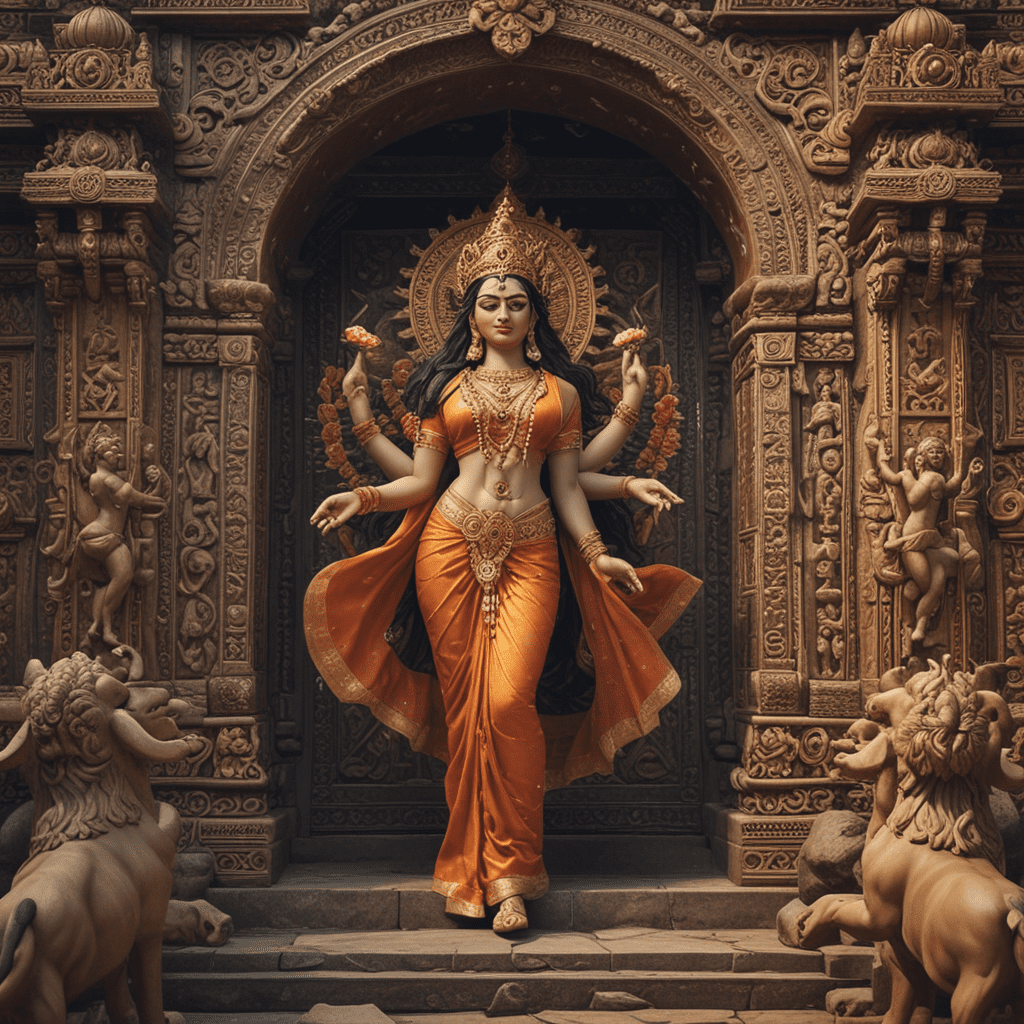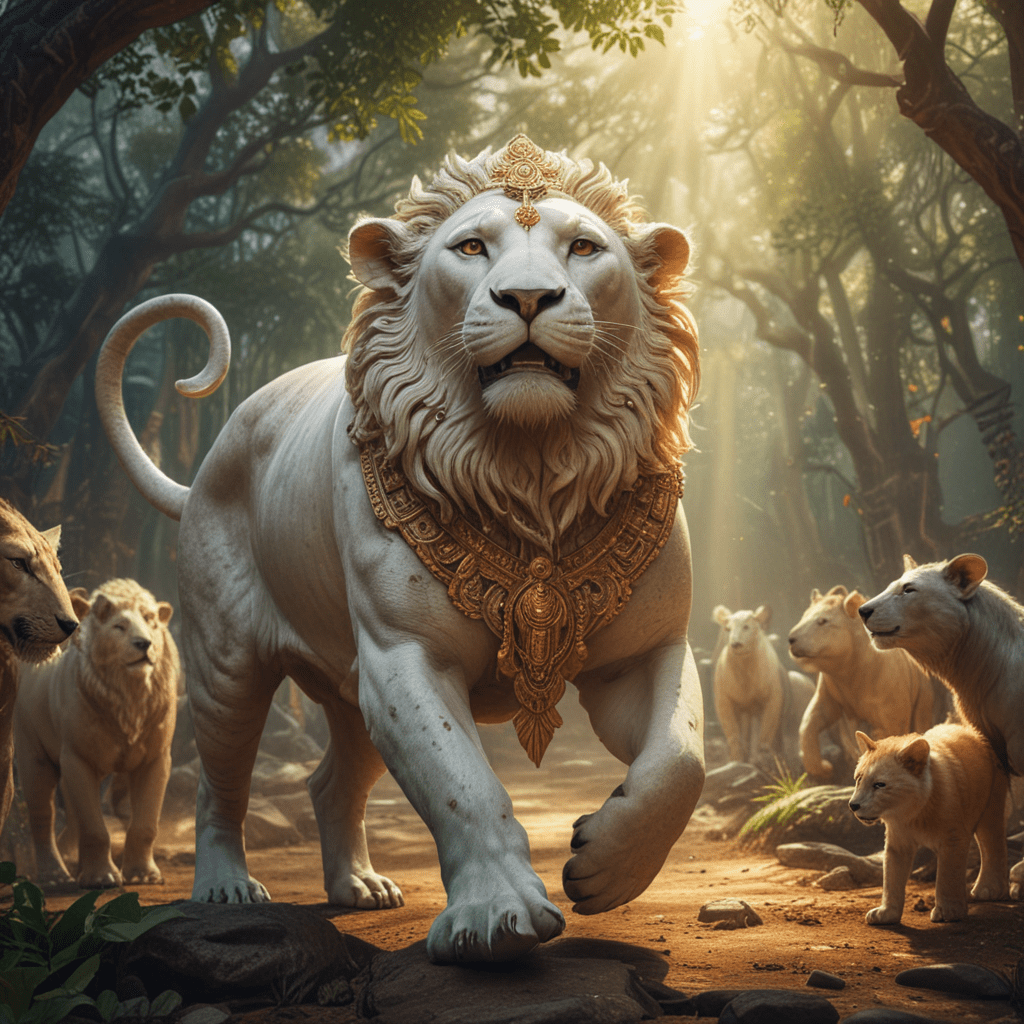The Most Fascinating Myths of Ancient Deities and Their Realms
I. Introduction
Myths have played a crucial role in shaping the beliefs and cultures of ancient civilizations. They serve not just as stories, but as foundational narratives that explain the mysteries of existence and the workings of the world around us. Ancient deities, personifications of natural forces and human traits, were central to these myths, each with their own realms reflecting the complexities of life, death, and the cosmos.
This article aims to explore captivating myths surrounding ancient deities and their realms, highlighting their cultural significance and the profound impact they had on the societies that worshipped them.
II. The Origins of Deities in Ancient Civilizations
The origins of deities can be traced back to the creation myths that permeated ancient cultures. These myths provided explanations for the creation of the world and the existence of humanity.
- Creation myths across different cultures: Many cultures have their unique creation narratives, such as the Genesis account in Judeo-Christian tradition and the Enuma Elish in Mesopotamian mythology.
- The role of deities in explaining natural phenomena: Deities were often invoked to explain natural events like storms, earthquakes, and seasons. For example, the Greek god Poseidon was believed to control the seas, while the Egyptians revered Ra as the sun god.
- How societies used deities to establish moral codes: Deities often personified moral values and societal norms, guiding human behavior and establishing ethical frameworks. The Ten Commandments in the Judeo-Christian tradition and the Dharma in Hinduism are prime examples.
III. Egyptian Pantheon: Ra, Osiris, and the Afterlife
The Egyptian pantheon is rich with stories of gods and their interactions with the world. Two of the most prominent deities are Ra and Osiris.
A. The myth of Ra and the sun’s journey: Ra, the sun god, was believed to traverse the sky each day in a solar barque, symbolizing rebirth and the cycle of life.
B. Osiris and the cycle of death and rebirth: Osiris, the god of the afterlife, represented resurrection. His myth involves his death by his brother Set and subsequent revival by his wife, Isis, symbolizing the eternal cycle of life.
C. The significance of the afterlife and the Book of the Dead: The afterlife was crucial in Egyptian belief, with the Book of the Dead serving as a guide for souls navigating the underworld, emphasizing the importance of moral conduct during life.
IV. Greek Mythology: Zeus and the Olympian Gods
Greek mythology is characterized by tales of gods and heroes, with Zeus as the central figure.
A. Zeus as the ruler of Mount Olympus: Zeus, the king of the gods, presided over Mount Olympus and was associated with thunder and lightning. His rule was marked by both authority and a penchant for human-like flaws.
B. The tales of heroism and hubris among Greek gods: Many myths revolve around themes of heroism and hubris, showcasing how the gods interacted with mortals and the consequences of their actions, such as the tragic story of Icarus.
C. The influence of Greek myths on Western literature and art: Greek mythology has profoundly influenced Western literature, art, and philosophy, from the works of Homer to modern adaptations in film and literature.
V. Norse Mythology: Odin, Thor, and Ragnarok
Norse mythology presents a vivid array of gods, with Odin and Thor standing out as essential figures.
A. Odin’s quest for knowledge and power: Odin, the Allfather, was known for his relentless pursuit of knowledge, often sacrificing much for wisdom, including an eye for a drink from Mimir’s well.
B. Thor’s adventures and the symbolism of Mjolnir: Thor, the god of thunder, wielded Mjolnir, a powerful hammer symbolizing protection and strength. His adventures often confronted giants and other threats to the gods and humanity.
C. The prophecy of Ragnarok and its implications: Ragnarok, the end of the world in Norse mythology, foretells a great battle leading to the death of many gods, illustrating themes of fate and renewal.
VI. Hindu Deities: Vishnu, Shiva, and the Cosmic Cycle
Hindu mythology is intricate, with a pantheon that reflects the complexities of existence.
A. The concept of Brahman and the Trimurti: Brahman is the ultimate reality in Hinduism, while the Trimurti—Brahma, Vishnu, and Shiva—represents the cosmic functions of creation, preservation, and destruction.
B. Myths surrounding Vishnu’s avatars and their purpose: Vishnu’s ten avatars, including Rama and Krishna, illustrate his role in restoring dharma (cosmic order) whenever it is threatened.
C. Shiva’s role in destruction and regeneration: Shiva embodies both destruction and regeneration, emphasizing the cyclic nature of the universe, where destruction leads to new creation.
VII. Mesopotamian Myths: Enki, Ishtar, and the Underworld
Mesopotamian mythology is among the earliest, featuring gods like Enki and Ishtar.
A. The creation myth of the Enuma Elish: The Enuma Elish describes the creation of the world from chaos and the rise of Marduk as the chief deity after defeating Tiamat.
B. Ishtar’s descent into the underworld and its significance: Ishtar’s journey to the underworld highlights themes of love, death, and rebirth, reflecting the duality of existence.
C. The duality of life and death in Mesopotamian beliefs: Mesopotamian myths often emphasized the delicate balance between life and death, showcasing gods that wielded power over both realms.
VIII. Indigenous Myths: Nature Spirits and Ancestral Deities
Indigenous myths often emphasize the relationship between humanity and nature.
A. The role of nature spirits in Native American mythology: Many Native American cultures believe in nature spirits that inhabit the land, rivers, and animals, embodying the interconnectedness of all life.
B. Aboriginal Australian beliefs and the Dreamtime: The Dreamtime is a foundational concept in Aboriginal culture, representing a time when ancestral spirits created the world and established the laws of existence.
C. The interconnectedness of humans and the natural world: Indigenous myths often highlight the importance of living in harmony with nature, reflecting a deep respect for the environment.
IX. Comparative Analysis of Myths Across Cultures
While ancient myths vary widely, they often share common themes and archetypes.
- Common themes and archetypes in ancient myths: Themes of creation, destruction, and the hero’s journey appear across cultures, suggesting universal human concerns.
- The influence of geography and environment on religious beliefs: Environmental factors shaped the deities worshipped and the myths created, such as river gods in agrarian societies.
- The evolution of myths over time: As societies evolved, so did their myths, reflecting changes in culture, technology, and understanding of the world.



